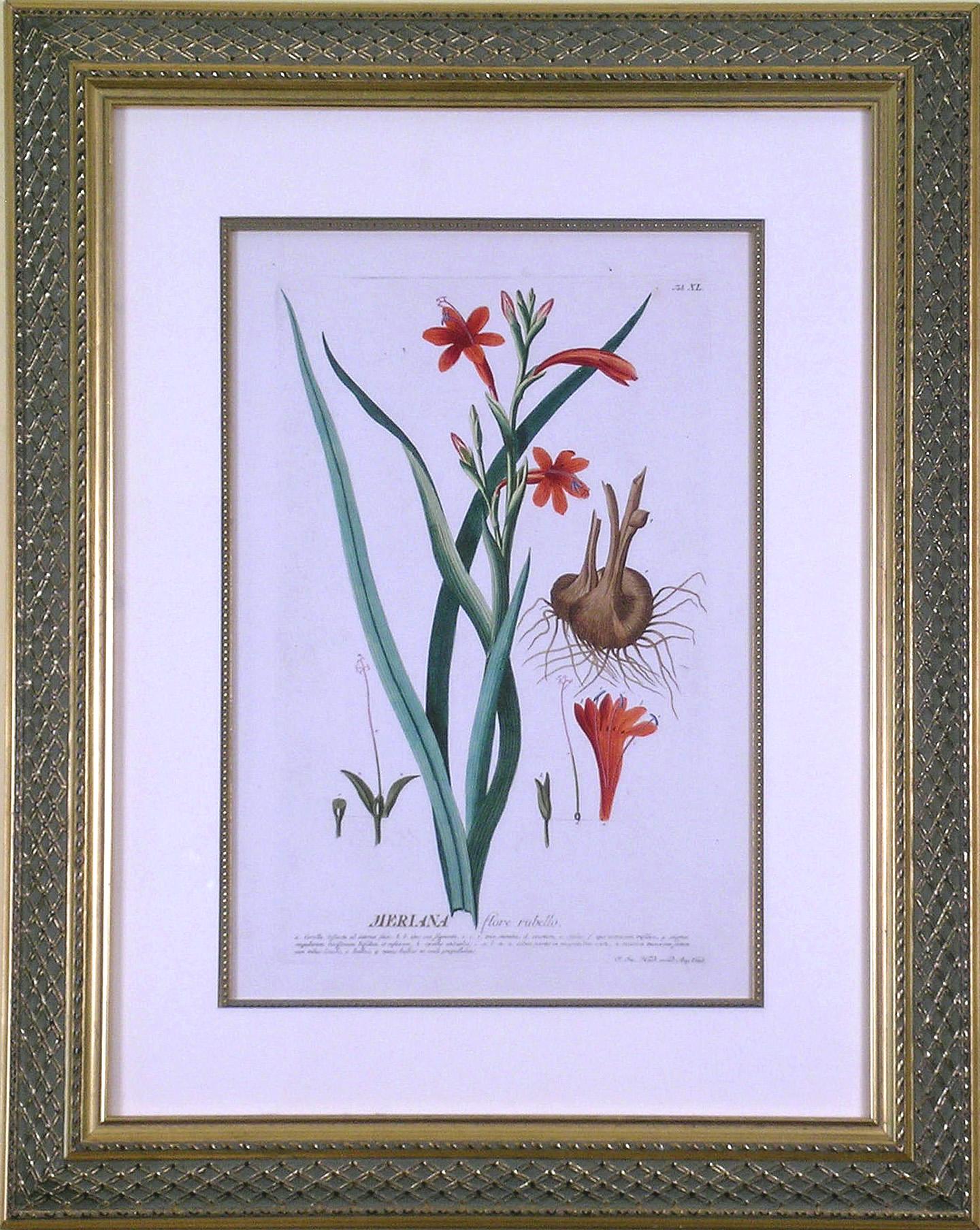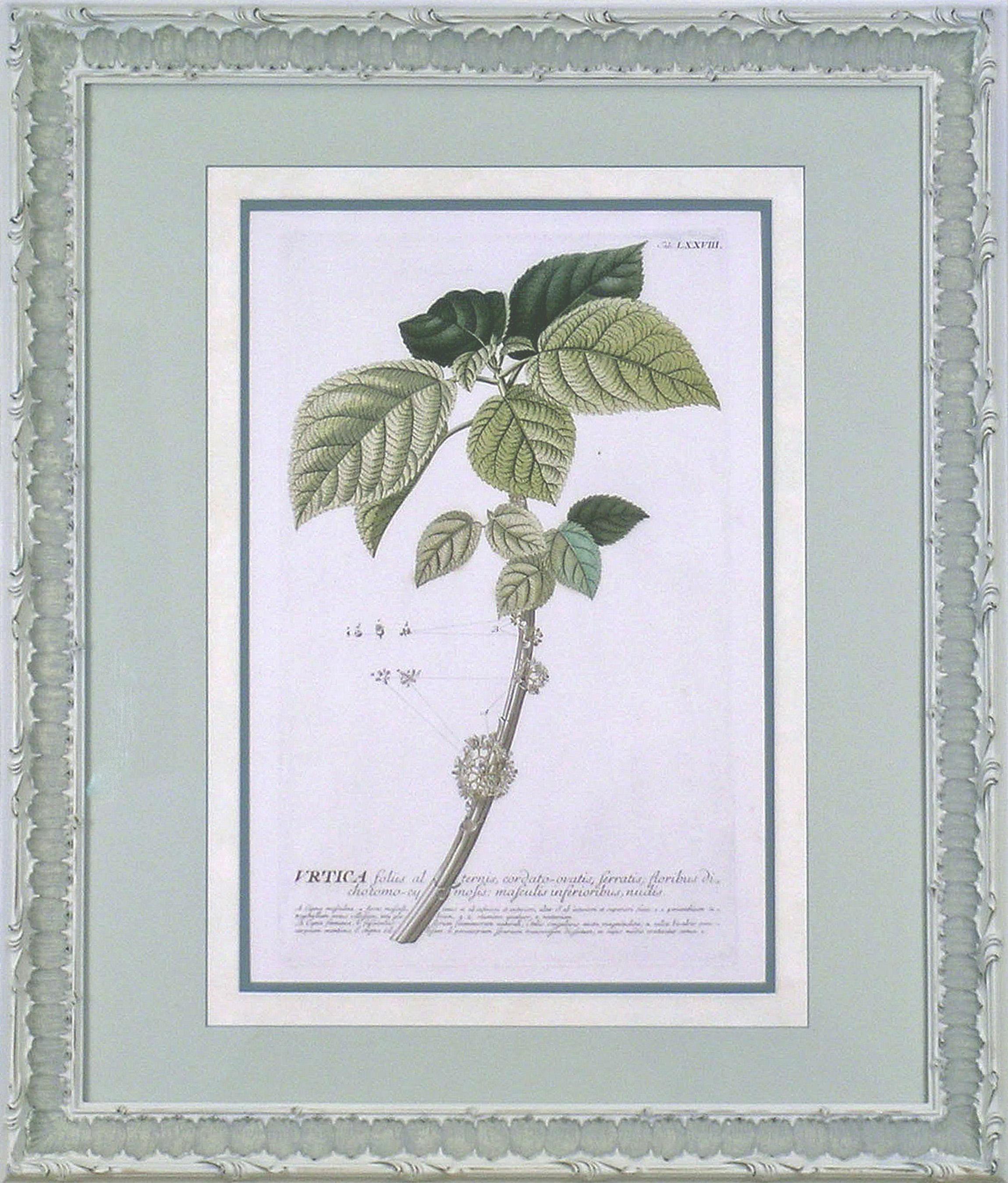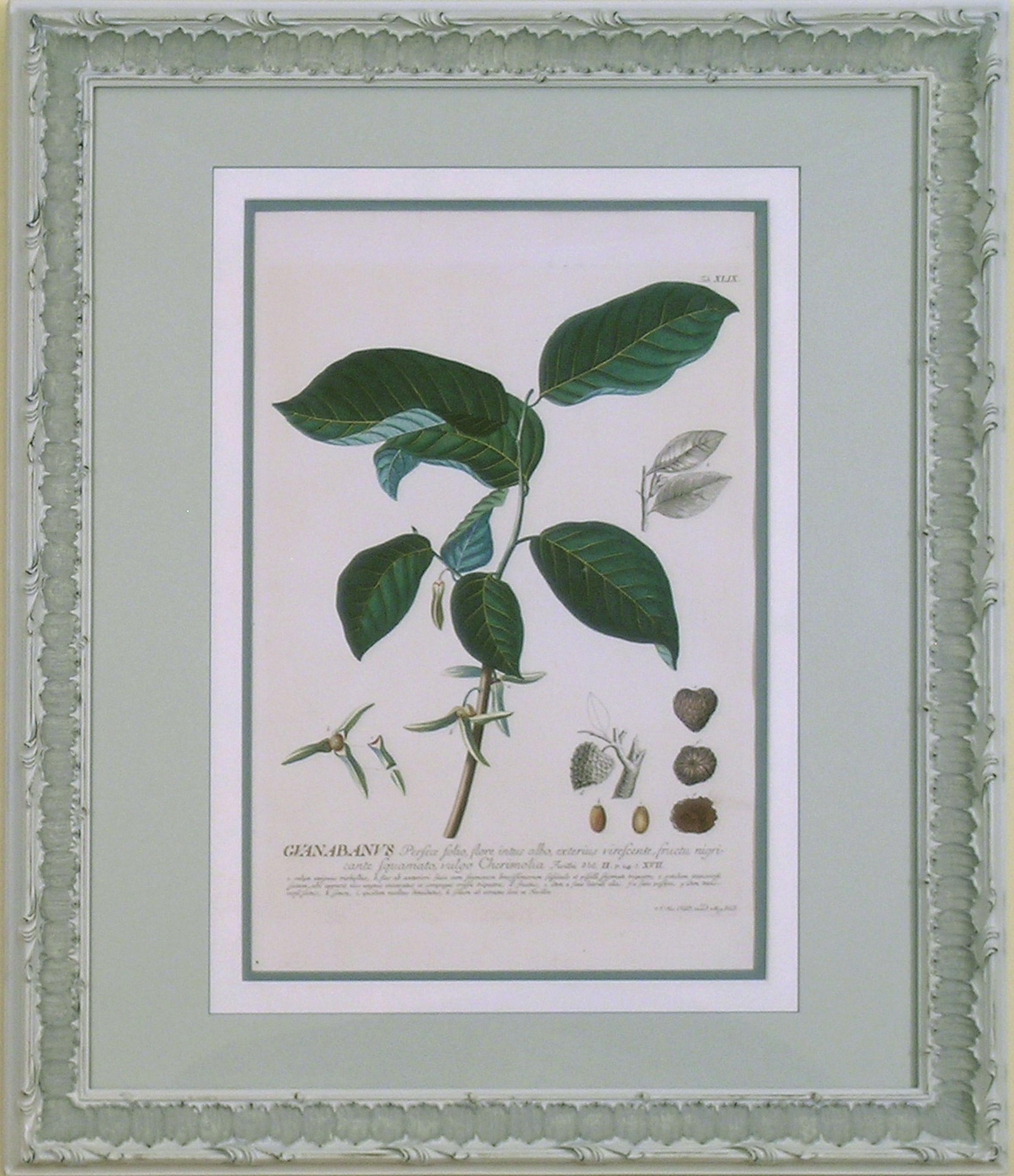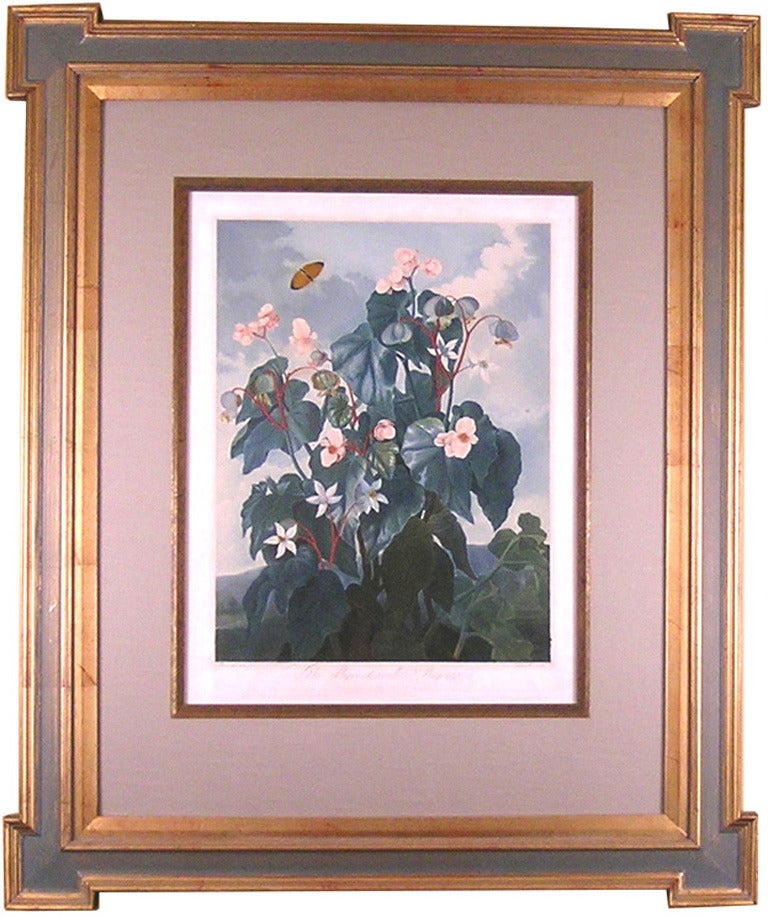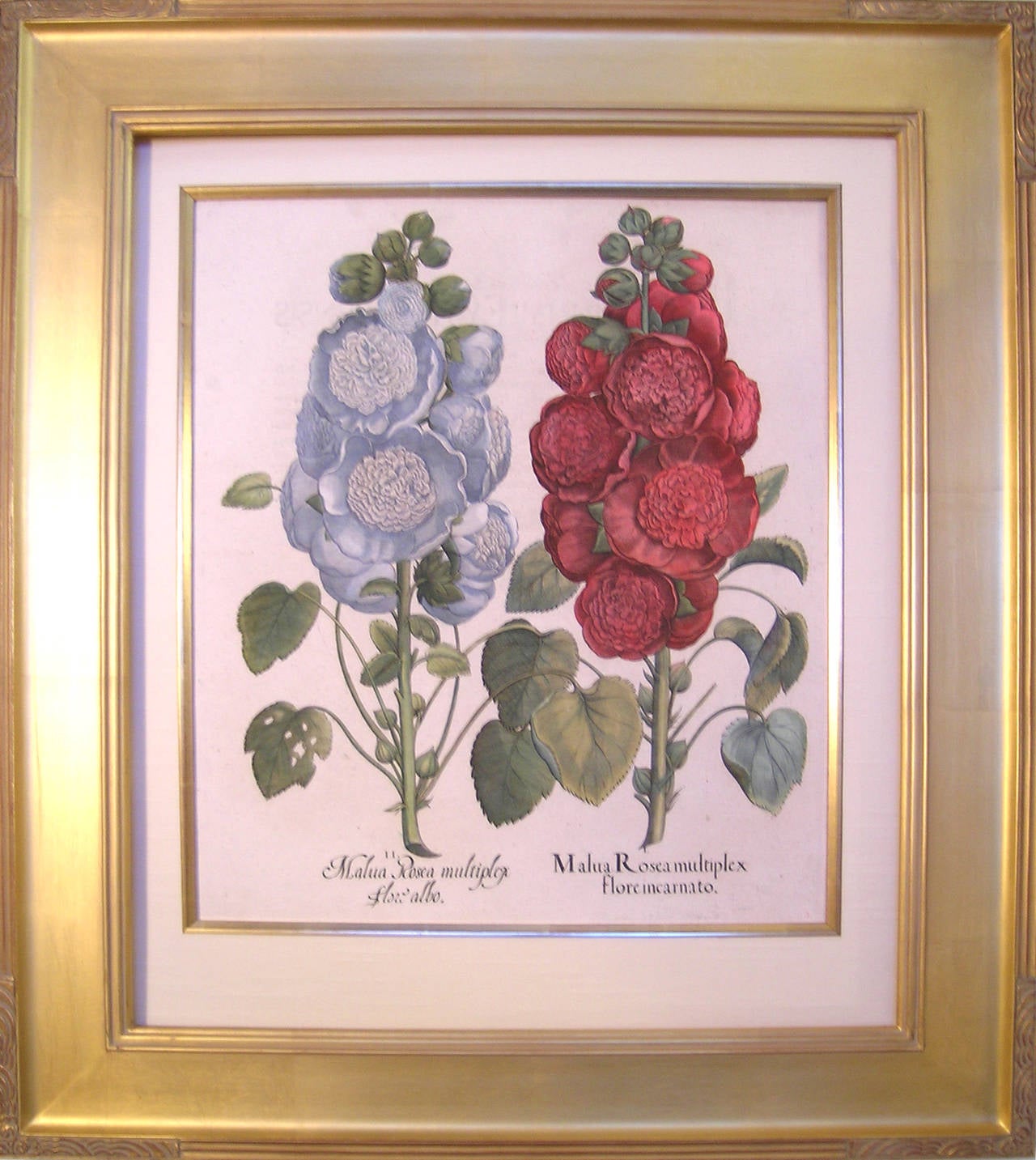Items Similar to Oracoli....
Want more images or videos?
Request additional images or videos from the seller
1 of 6
Jacopo GuaranaOracoli....1792
1792
About the Item
JACOPO GUARANA. (1720 – 1808).
“Oracoli auguri, aruspici, sibille, indovini della religione pagna.”
Venice, 1792.
Engraving with modern hand-coloring.
12” x 14.5” unframed.
Truly a native son, Jacopo Guarana spent his entire 88 years of life in Venice, his birthplace. And what a wondrous and productive life it was! Throughout his career Jacopo followed the great Venetian decorative artists of the 18th century. His first studies were with Sebastiano Ricci, and later with the illustrious Giambattista Tiepolo. In 1756, at the age of 36, Guarana became a member of the Accademia in Venice. There is much documentation of his travels through Italy where he decorated the domes and ceilings of both palaces and churches. Of his works, perhaps the most notable are the Martyrdom of Saint Thomas, done in 1755, and the Assumption of the Virgin, in 1758. His frescoes can be found in churches and palaces from Venice, Ca’Rezzonico and Palazzo Balbi, across the mainland, Villa Pisani at Stra, Villa Contarini-Rota in Valnogaredo, and the Villa Contarini in Cinto Eugeneo. It is said his work is very much in the style of Tiepolo, but with a somewhat lighter palette.
The “Oracoli….” was published in Venice in 1792, in his seventy-second year. It presents a gallery of ancient sibyls and oracles in a very elegant manner. A decorative border surrounds each engraving. The coloring is in keeping with the 18th century style and pigment. Their beauty is as extraordinary as are the subjects themselves. One truly feels the emotions which Italians pour into their art.
Grove Dictionary of Art. Macmillian Publisher Limited. New York, 2000
- Creator:Jacopo Guarana (1720-1808, Italian)
- Creation Year:1792
- Dimensions:Height: 23.75 in (60.33 cm)Width: 21 in (53.34 cm)Depth: 1 in (2.54 cm)
- Medium:
- Movement & Style:
- Period:
- Condition:Clean, crisp image. Full margins. Superb hand-coloring.
- Gallery Location:Florham Park, NJ
- Reference Number:
About the Seller
5.0
Gold Seller
These expertly vetted sellers are highly rated and consistently exceed customer expectations.
1stDibs seller since 2014
161 sales on 1stDibs
Typical response time: 3 hours
- ShippingRetrieving quote...Ships From: Florham Park, NJ
- Return PolicyA return for this item may be initiated within 1 day of delivery.
More From This SellerView All
- Meriana (Bugle Lily)By Georg Dionysius EhretLocated in Florham Park, NJGEORGE DIONSYSIUS EHRET (1708-1770). Plantae Selectae.... Text by Dr. Christoph Trew. Drawn by Georg Dionsysius Ehret. Engraved by Johannes Jacobus and Johannes Elias Haid. Nuremberg, 1750-73. Hand-colored engravings. Titles highlighted with goldleaf. 100 plates. 19.5” x 13.5” Unframed. A supplement of 20 plates issued by B.C. Vogel in 1790. "The dominant influence in botanical art during the middle years of the 18th century." "One of the finest records of cultivated flowers..." "His accuracy and general excellence as a true botanical artist have never been equaled." Ehret’s praises have been sung throughout the centuries. While his training was in gardening, Ehret's true talents were in his art. Drawing the specimens from life in the garden's in which he labored won Ehret his employer's praise and his co-workers jealousy. Not only were his botanical portraits highly accurate in every technical detail, they reflected an awe-inspiring love of subject. A restless man, Ehret wandered from Heidelberg through Germany to Vienna and Basle, working his way to Paris and finally settling in London. He was honored by peers and patrons wherever he traveled. Ehret's list of benefactors include the most brilliant and generous members of society in his day. However, it was Christoph Trew, a wealthy physician, lifelong supporter and friend, who published the work for which Ehret is best known, Plantae Selectae. Ehret went to Leiden to meet Carolus Linnaeus and they became the best of friends. It is the Linnaen classification of plants to which Ehret subscribed. In distinguishing of the sexual systems of plants and the cross-sectioning of specimens, based on the teachings of Linnaeus, Ehret's illustrations have become the standard followed by horticulturists throughout the centuries. Ehret is the only foreigner to be elected a Fellow of the Royal Society in England. The illustrations for Plantae Selectae were printed in black and white and painstaking colored by hand at the time of publication. The color is superb! All of the initial words of the titles were gilded; a glorious tribute to an achievement of excellence. Various scholars at the time of publication praised the book highly, singling out the excellent quality of Ehret's watercolor studies, as well as Haid's fidelity to them. In a letter to Linnaeus in the 1750's, Dr. Trew called the book "one of the miracles of our century in the natural sciences." In the 1960's, Claus Nissen wrote "the Plantae Selectae became the most beautiful German plant...Category
1750s Academic Prints and Multiples
MaterialsGold Leaf
- Guanabanus (Guabana or Soursop Fruit)By Georg Dionysius EhretLocated in Florham Park, NJGEORGE DIONSYSIUS EHRET (1708-1770). Plantae Selectae.... Text by Dr. Christoph Trew. Drawn by Georg Dionsysius Ehret. Engraved by Johannes Jacobus and Johannes Elias Haid. Nuremberg, 1750-73. Hand-colored engravings. Titles highlighted with goldleaf. 100 plates. 19.5” x 13.5” Unframed. A supplement of 20 plates issued by B.C. Vogel in 1790. "The dominant influence in botanical art during the middle years of the 18th century." "One of the finest records of cultivated flowers..." "His accuracy and general excellence as a true botanical artist have never been equaled." Ehret’s praises have been sung throughout the centuries. While his training was in gardening, Ehret's true talents were in his art. Drawing the specimens from life in the garden's in which he labored won Ehret his employer's praise and his co-workers jealousy. Not only were his botanical portraits highly accurate in every technical detail, they reflected an awe-inspiring love of subject. A restless man, Ehret wandered from Heidelberg through Germany to Vienna and Basle, working his way to Paris and finally settling in London. He was honored by peers and patrons wherever he traveled. Ehret's list of benefactors include the most brilliant and generous members of society in his day. However, it was Christoph Trew, a wealthy physician, lifelong supporter and friend, who published the work for which Ehret is best known, Plantae Selectae. Ehret went to Leiden to meet Carolus Linnaeus and they became the best of friends. It is the Linnaen classification of plants to which Ehret subscribed. In distinguishing of the sexual systems of plants and the cross-sectioning of specimens, based on the teachings of Linnaeus, Ehret's illustrations have become the standard followed by horticulturists throughout the centuries. Ehret is the only foreigner to be elected a Fellow of the Royal Society in England. The illustrations for Plantae Selectae were printed in black and white and painstaking colored by hand at the time of publication. The color is superb! All of the initial words of the titles were gilded; a glorious tribute to an achievement of excellence. Various scholars at the time of publication praised the book highly, singling out the excellent quality of Ehret's watercolor studies, as well as Haid's fidelity to them. In a letter to Linnaeus in the 1750's, Dr. Trew called the book "one of the miracles of our century in the natural sciences." In the 1960's, Claus Nissen wrote "the Plantae Selectae became the most beautiful German plant...Category
1750s Academic Prints and Multiples
MaterialsGold Leaf
- Urtica (Nettle)By Georg Dionysius EhretLocated in Florham Park, NJGEORGE DIONSYSIUS EHRET (1708-1770). Plantae Selectae.... Text by Dr. Christoph Trew. Drawn by Georg Dionsysius Ehret. Engraved by Johannes Jacobus and Johannes Elias Haid. Nuremberg...Category
1750s Academic Prints and Multiples
MaterialsGold Leaf
- Heliocarpus (Tree, Malvales)By Georg Dionysius EhretLocated in Florham Park, NJGEORGE DIONSYSIUS EHRET (1708-1770). Plantae Selectae.... Text by Dr. Christoph Trew. Drawn by Georg Dionsysius Ehret. Engraved by Johannes Jacobus and Johannes Elias Haid. Nuremberg, 1750-73. Hand-colored engravings. Titles highlighted with goldleaf. 100 plates. 19.5” x 13.5” Unframed. A supplement of 20 plates issued by B.C. Vogel in 1790. "The dominant influence in botanical art during the middle years of the 18th century." "One of the finest records of cultivated flowers..." "His accuracy and general excellence as a true botanical artist have never been equaled." Ehret’s praises have been sung throughout the centuries. While his training was in gardening, Ehret's true talents were in his art. Drawing the specimens from life in the garden's in which he labored won Ehret his employer's praise and his co-workers jealousy. Not only were his botanical portraits highly accurate in every technical detail, they reflected an awe-inspiring love of subject. A restless man, Ehret wandered from Heidelberg through Germany to Vienna and Basle, working his way to Paris and finally settling in London. He was honored by peers and patrons wherever he traveled. Ehret's list of benefactors include the most brilliant and generous members of society in his day. However, it was Christoph Trew, a wealthy physician, lifelong supporter and friend, who published the work for which Ehret is best known, Plantae Selectae. Ehret went to Leiden to meet Carolus Linnaeus and they became the best of friends. It is the Linnaen classification of plants to which Ehret subscribed. In distinguishing of the sexual systems of plants and the cross-sectioning of specimens, based on the teachings of Linnaeus, Ehret's illustrations have become the standard followed by horticulturists throughout the centuries. Ehret is the only foreigner to be elected a Fellow of the Royal Society in England. The illustrations for Plantae Selectae were printed in black and white and painstaking colored by hand at the time of publication. The color is superb! All of the initial words of the titles were gilded; a glorious tribute to an achievement of excellence. Various scholars at the time of publication praised the book highly, singling out the excellent quality of Ehret's watercolor studies, as well as Haid's fidelity to them. In a letter to Linnaeus in the 1750's, Dr. Trew called the book "one of the miracles of our century in the natural sciences." In the 1960's, Claus Nissen wrote "the Plantae Selectae became the most beautiful German plant...Category
1750s Academic Prints and Multiples
MaterialsGold Leaf
- Oblique-leaved BegoniaBy Dr. Robert John ThorntonLocated in Florham Park, NJThis piece would pair well with Thornton's "Hyacinths" which is also listed. DR. ROBERT JOHN THORNTON (c1765 – 1832). The Temple of Flora. London, 17...Category
Early 19th Century Academic Prints and Multiples
MaterialsHandmade Paper, Laid Paper, Plexiglass, Rag Paper, Silk, Watercolor, Arc...
- Malva Rosea (Hollyhock, Mallow)By Basilius BeslerLocated in Florham Park, NJThis piece would pair well with Basil Besler's "Malva hortensis flore..." which is also listed BASIL BESLER (1561 – 1629). Hortus Eystettensis. Konrad ...Category
18th Century and Earlier Academic Prints and Multiples
MaterialsRag Paper, Silk, Watercolor, Archival Paper, Archival Tape, Gesso, Handm...
You May Also Like
- Color-Blast BouquetBy Dionisios FragiasLocated in New York, NYDionisios Fragias is a New York -based artist born on the Greek island of Kefalonia and raised in New York City. He is the protege of the artist Jeff Koons whose years-long mentorshi...Category
2010s Abstract Abstract Prints
MaterialsArchival Tape, Archival Ink, Archival Paper, Color, Archival Pigment
- "The Temptation of Saint Anthony " Etching, SignedBy Fernand CormonLocated in Milwaukee, WI"The Temptation of Saint Anthony" is an original etching by Fernand Cormon. This piece has the artist's stamp. The piece is signed in pencil by the artis...Category
1890s Academic Figurative Prints
MaterialsEtching, Paper, Ink, Laid Paper
- “Innocent Captivation Amusement Pastorale”By Anthony CardonLocated in Southampton, NYOriginal stipple engraving on a verge type of hand laid paper. The overall size of the engraving is 15.75 inches by 12.75 inches The image size of the engraving is 14 inches by 12 i...Category
Early 1800s Academic Figurative Prints
MaterialsEngraving, Laid Paper
- “Returning Home”By Hermanus Jan Hendrik RijkelijkhuysenLocated in Southampton, NYOriginal etching on Ingres laid paper (watermarked, see last photograph) attributed to the hand of the well known Dutch artist, Hermanus Jan Hendrik Rijkelijkhuysen. No visible signature. Sheet size 9.25 by 12 inches. Sight size 7 by 9 inches. Under glass. Circa 1875. Condition is excellent. Professionally matted and framed in a walnut colored frame with gold leaf edge. Overall framed measurements are 12.75 by 14.5 inches. Gallery label verso. Provenance: A Sarasota, Florida collector. Biography: Hermanus Jan Hendrik Rijkelijkhuysen (1813-1883) was a landscape painter and etcher. Rijkelijkhuysen spent most of his life working in the vicinity of his birthplace Utrecht. Inspired by the polders on the one hand and the Utrechtse Heuvelrug on the other, he mainly painted and etched water...Category
1870s Academic Landscape Prints
MaterialsLaid Paper, Etching
- “Les Revers de la Fortune”Located in Southampton, NYOriginal stipple engraving with colors titled “Les Revers de la Fortune” (Reversal of Fortune) by the well known French engraver, Louis Marin Bonnet...Category
1780s Academic Interior Prints
MaterialsLaid Paper, Engraving
- You & Me + Warhol + You , in RainbowBy Alex Guofeng CaoLocated in New York, NYIn a captivating new collection, Alex Guofeng Cao dazzles audiences with his unique twist on instantly recognizable images. Inspired by history and pop culture, Cao manipulates one i...Category
2010s Contemporary Figurative Prints
MaterialsPlexiglass, Archival Ink, Mixed Media, Oil, Archival Paper, Archival Pig...
Recently Viewed
View AllMore Ways To Browse
Antique Tape
Venice Church
Print Dome
Venetian Print
Venetian Watercolor
Venetian Watercolor Art
Church Virgins
Ca Rezzonico
Assumption Of The Virgin
Shipping Poster
Picasso Limited Edition And Signed Prints
Italian Poster Print
Retro Museum Exhibition Posters
Vintage House Illustration
Vintage Children Playing
Children Playing Vintage
Small Original Lithographs
Huge Architectural
